7 Classical music periods explained with examples
A Beginner’s Guide to the Seven Eras of Classical Music
Become classical-music-smart by learning about all eras: medieval, renaissance, baroque, classical, romantic, modern and contemporary
What is classical music?
Classical music, often referred to as Western art music, encompasses a broad tradition that spans over a millennium: from the Medievals all the way to 21st century. This term is sometimes confused with the Classical era (usually written with a capital C), a specific period within this tradition from about 1750 to 1820 including composers like Mozart, Haydn and Beethoven. In this guide, we’ll journey through the seven distinct eras of classical music, detailing their developments, characteristics, and key composers. We’ll also explore how musical instruments, concert settings, and sheet music evolved over time.
Of course outside ‘Western’ (usually referring to Europe and the United States) art music, there are many rich music traditions over the whole world with their own history, harmonies and instruments. Please note that those are very interesting to explore, but not the focus of this blog post.
Whether you’re new to classical music or you want to discover new composers to listen to, it’s important to know the classical music periods and their characteristics. Knowing how classical music developed through the eras will guide you in finding new music to love, listen and play.
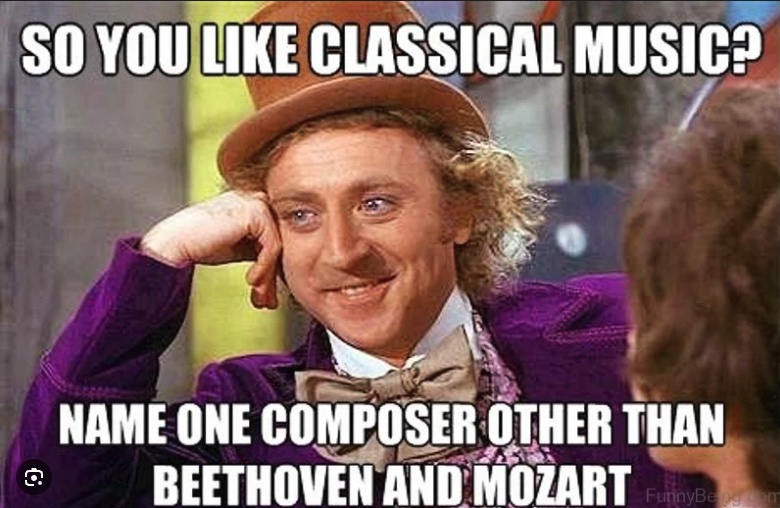
What are the classical music periods?
Although music evolves in organically and differs per country and composer, in music history we distinguish seven classical music periods:
- Medieval Period (c. 500–1400)
- Renaissance Period (c. 1400–1600)
- Baroque Period (c. 1600–1750)
- Classical Period (c. 1750–1820)
- Romantic Period (c. 1820–1900)
- 20th Century and Modern (1900–2000)
- Contemporary (2000–Present)
In this blog post I will explain how classical music developed through the centuries, what instruments are used, the most important composers and of course lots of listening tips.
#1 Medieval Period (c. 500–1400)
The Medieval period marks the beginning of Western classical music history. Following the fall of the Roman Empire, music in this era was primarily religious, as the Church dominated cultural and intellectual life. Gregorian chant, named after Pope Gregory I, was the most prevalent form of music. These chants were monophonic, consisting of a single melodic line without harmonic accompaniment, creating a meditative and spiritual atmosphere in vast, echoing cathedrals.
Medieval polyphony
Polyphony began to emerge in the later Medieval period, introducing multiple independent melody lines sung simultaneously. This development added complexity and richness to the music.
Medieval musical instruments
Instruments were used sparingly, but the ones that did appear included early versions of the lute, harp, and hurdy-gurdy. The violin’s ancestors, such as the fiddle and rebec, began to take shape, laying the groundwork for future string instruments.
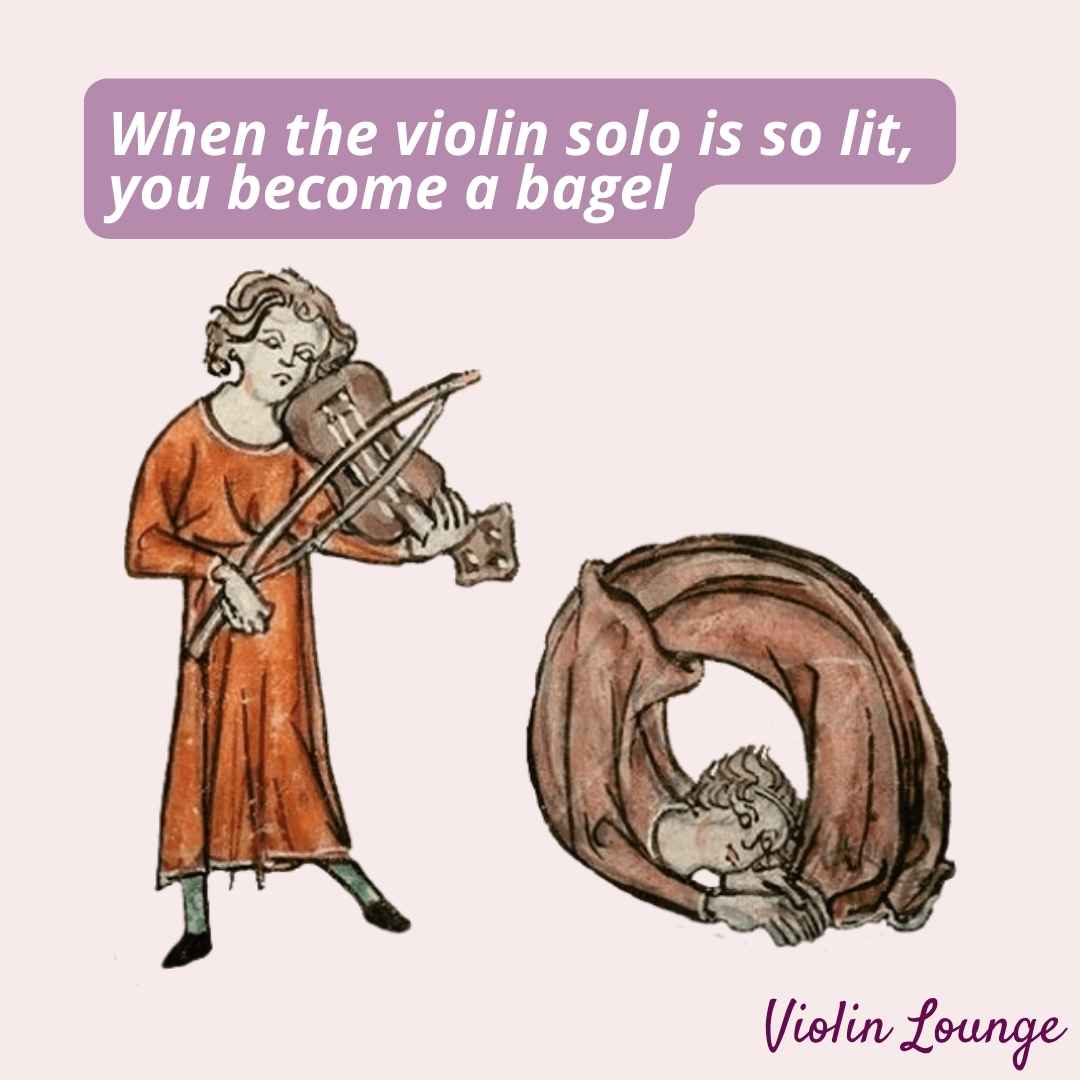
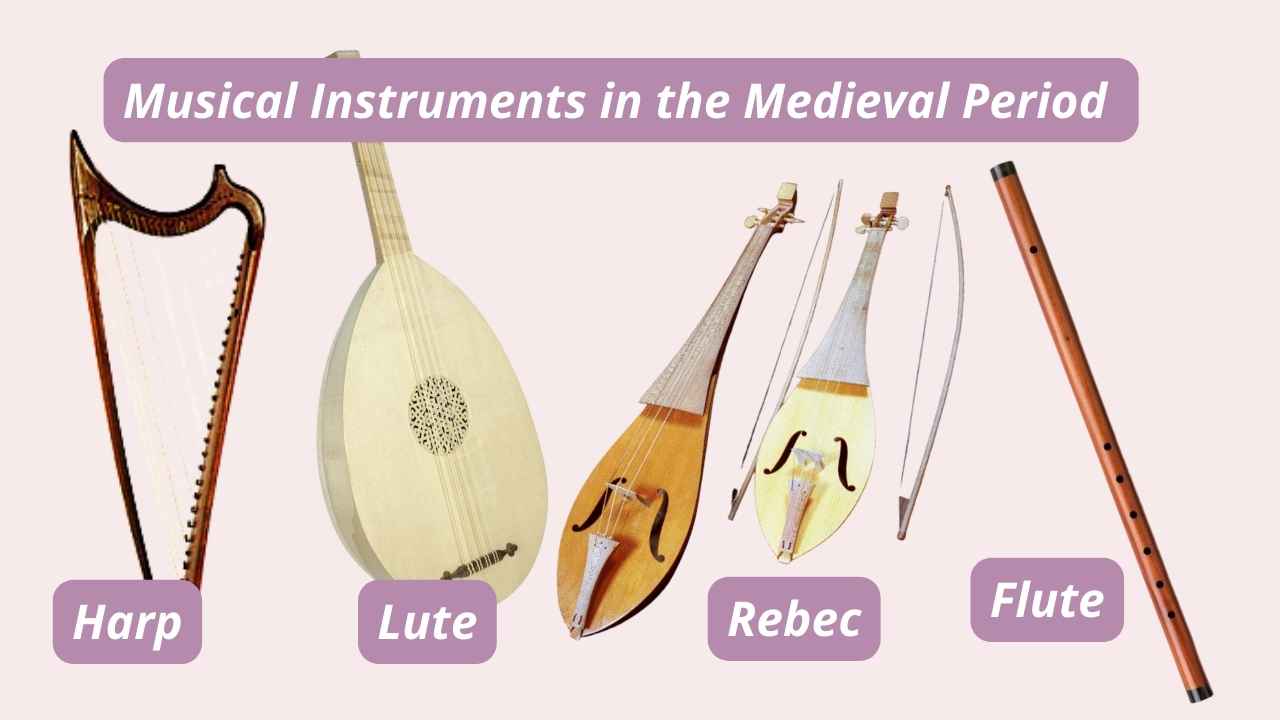
Sheet music during this period was rudimentary. Notation systems, like neumes, were used to indicate pitch but not precise rhythm. This limited notation was sufficient for the monophonic chants of the time but would evolve significantly in later periods.
Key Composers and Listening Tips in the Medieval Period:
- Hildegard von Bingen: A visionary abbess and composer, Hildegard’s music is ethereal and deeply spiritual. Listening tips: “O vis aeternitatis,” “Ave generosa,” “Ordo Virtutum”
- Guillaume de Machaut: A poet and composer, Machaut’s work includes both secular and sacred music. Listening tips: “Messe de Nostre Dame,” “Douce dame jolie,” “Le Remède de Fortune”
- Perotin: Known for his elaborate polyphonic compositions, Perotin’s music often features intricate melodic interplay. Listening tips: “Viderunt omnes,” “Sederunt principes,” “Beata viscera”
- Leonin: One of the earliest known composers of polyphony, Leonin’s works are foundational to the development of Western music. Listening tips: “Magnus liber organi,” “Alleluia, Pascha nostrum”
- Francesco Landini: A blind Italian composer known for his beautiful melodies. Listening tips: “Ecco la primavera,” “Non avrà ma’ pietà,” “Ballata: Questa fanciulla”
#2 Renaissance Period (c. 1400–1600)
The Renaissance era, meaning “rebirth,” was a time of great cultural revival and exploration in Europe. Music flourished as composers sought to express the beauty of the human spirit. This period saw the rise of polyphonic music, where multiple independent melody lines were woven together, creating intricate and harmonious textures.
Music during the Renaissance became more expressive and harmonically complex. The advent of imitative counterpoint, where musical themes are echoed between different voice parts, became a hallmark of the era.
Instruments such as the lute, viol, recorder, and harpsichord gained prominence. The violin began to evolve from earlier string instruments, developing a more refined shape and sound, which would soon lead to its central role in both ensemble and solo performances.
Concert settings during this time included both sacred spaces, like churches, and the courts of nobility, where secular music thrived. The role of the violin began to grow as it became a favored instrument for dance music and courtly entertainment.
Sheet music notation improved significantly during the Renaissance. The development of mensural notation allowed for the precise indication of rhythm, making the performance of complex polyphonic works possible. This period also saw the invention of music printing, which facilitated the wider dissemination of musical works.
Key Composers and Listening Tips in the Renaissance Period:
- Josquin des Prez: A master of Renaissance polyphony, Josquin’s music is known for its expressive depth. Listening tips: “Ave Maria,” “Missa Pange lingua,” “El Grillo”
- Giovanni Pierluigi da Palestrina: His smooth polyphonic style became a model for church music. Listening tips: “Missa Papae Marcelli,” “Sicut cervus,” “Stabat Mater”
- Thomas Tallis: An English composer whose work spans the transition from Catholic to Anglican music. Listening tips: “Spem in alium,” “If Ye Love Me,” “Lamentations of Jeremiah”
- William Byrd: Known for both his sacred and secular works, Byrd’s music is rich and complex. Listening tips: “Ave verum corpus,” “Mass for Four Voices,” “Pavana Lachrymae”
- Orlando di Lasso: A prolific composer whose works include madrigals, masses, and motets. Listening tips: “Matona mia cara,” “Tristis est anima mea,” “Missa pro defunctis”
Were there orchestras in the renaissance period?
During the Renaissance period, the concept of an orchestra as we know it today did not exist. Instead, music was often performed by smaller ensembles known as consorts, which consisted of instruments from the same family, such as viols, recorders, or lutes. These consorts were highly valued for their homogeneous sound and were used extensively in both secular and sacred music settings. The Renaissance also saw mixed ensembles, where instruments of different families played together, but these were more ad hoc and lacked the formal structure of a later orchestra. While large-scale ensembles did perform during grand occasions and court ceremonies, they were not standardized like the Baroque orchestras that followed. The development of instrumental music during the Renaissance, including the growing popularity of polyphony and the advancement of instrument design, set the stage for the formation of orchestras in the subsequent Baroque period.
#3 Baroque Period (c. 1600–1750)
The Baroque period introduced a dramatic and expressive style of music. This era emphasized contrast, elaborate ornamentation, and emotional depth. Composers like Johann Sebastian Bach and Antonio Vivaldi were pioneers in creating new musical forms such as the concerto, sonata, and opera.
Basso continuo
Baroque music is known for its use of basso continuo—a continuous bass line played by keyboard and bass instruments—which provided a harmonic foundation. Composers also explored the use of contrast in dynamics (loud and soft) and textures (solo versus ensemble), creating vibrant and dynamic pieces. A very well known example is the Canon in D by Pachelbel.
Baroque musical instruments
Instruments developed significantly during the Baroque period. The violin, in particular, saw remarkable advancements. Luthiers like Stradivari perfected the design, producing violins with a powerful, rich sound that became central to both solo and ensemble performances.
Concert halls and opera houses began to emerge, providing dedicated spaces for musical performance and allowing for greater public access to music.
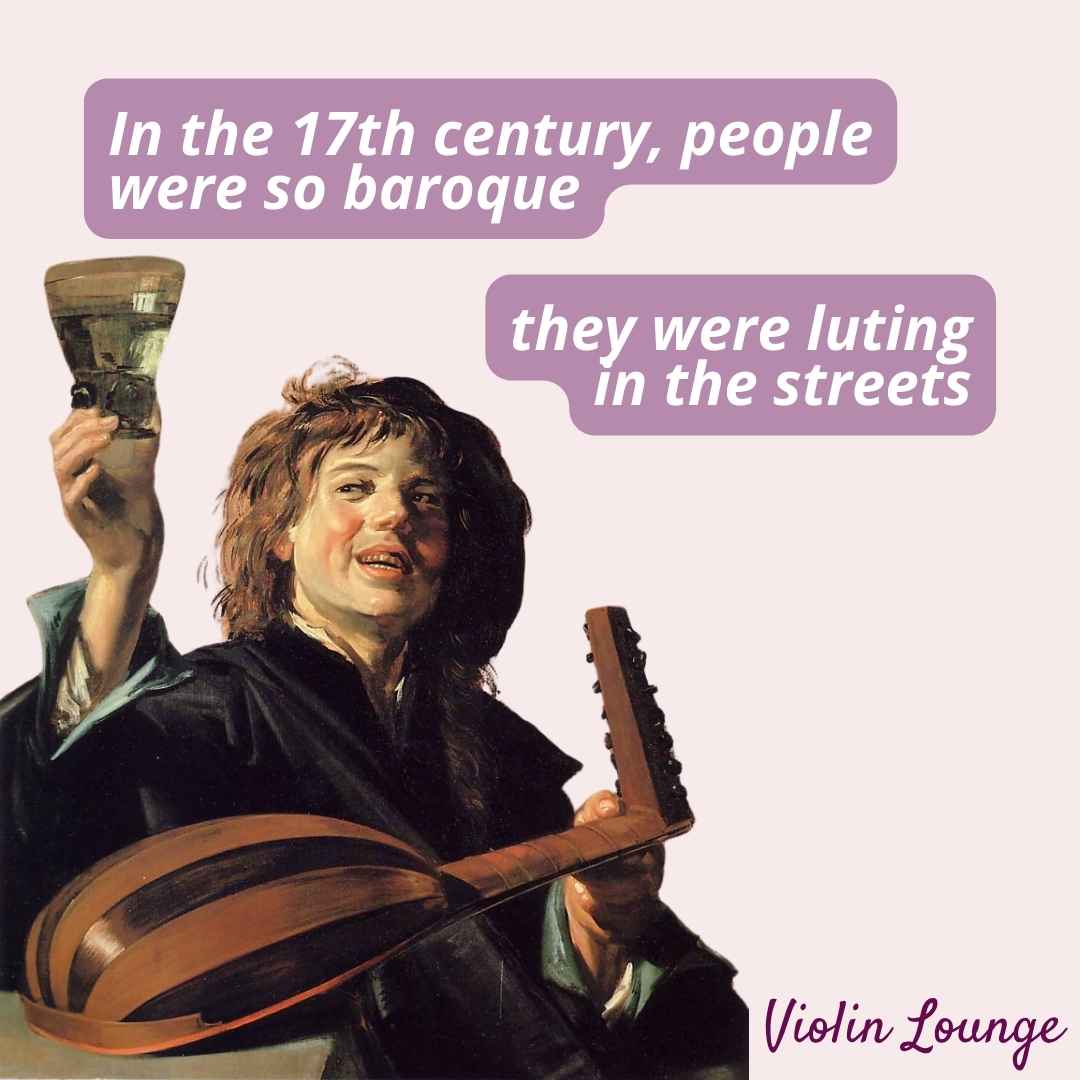
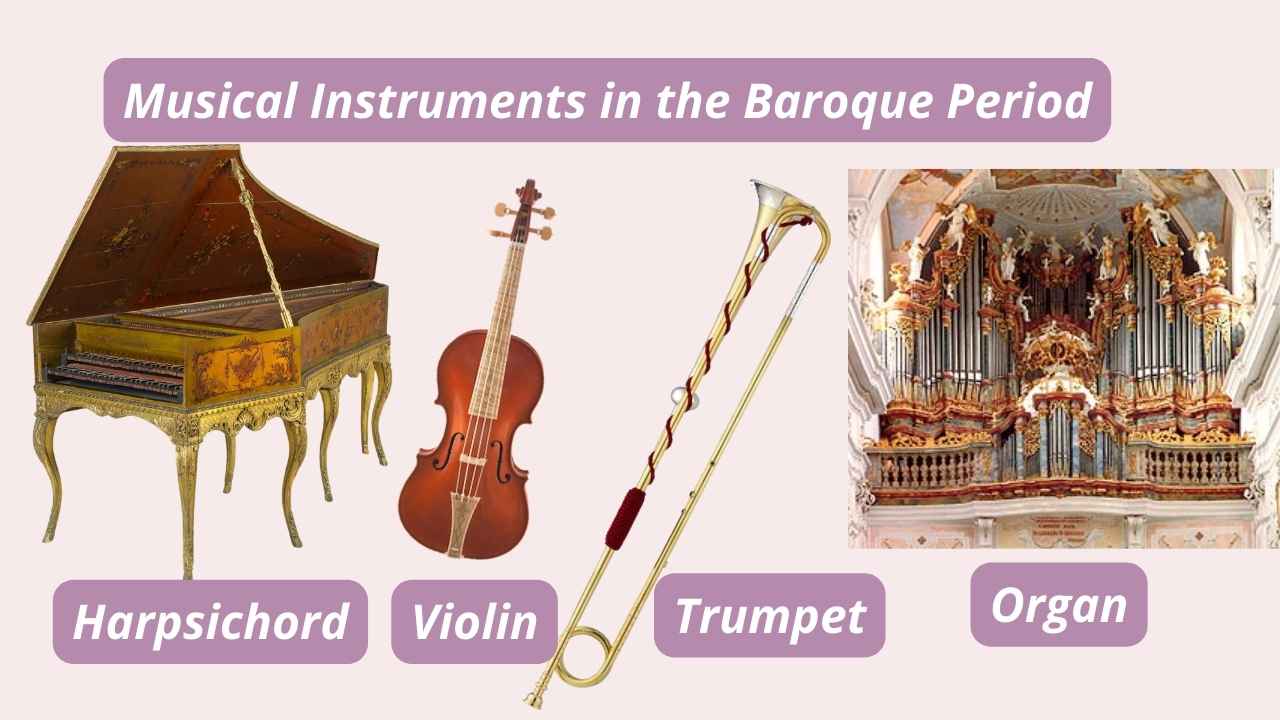
Sheet music also evolved, with the use of figured bass and precise notation for ornamentation and dynamics, enabling musicians to perform with greater expressiveness and technical precision.
Key Composers and Listening Tips in the Baroque Period:
- Johann Sebastian Bach: A German composer whose intricate counterpoint and harmonic mastery define the Baroque style. Listening tips: “Brandenburg Concertos,” “Mass in B minor,” “Toccata and Fugue in D minor”
- George Frideric Handel: Known for his operas, oratorios, and instrumental works, Handel’s music is dramatic and accessible. Listening tips: “Messiah,” “Water Music,” “Music for the Royal Fireworks”
- Antonio Vivaldi: An Italian composer famous for his virtuosic violin concertos. Listening tips: “The Four Seasons,” “Gloria,” “Concerto for Strings in G major”
- Claudio Monteverdi: His work bridges the Renaissance and Baroque periods, especially in opera. Listening tips: “L’Orfeo,” “Vespro della Beata Vergine,” “L’incoronazione di Poppea”
- Henry Purcell: An English composer whose work includes operas, sacred music, and chamber music. Listening tips: “Dido and Aeneas,” “Music for the Funeral of Queen Mary,” “Abdelazer Suite”
Terrace dynamics
The Baroque era introduced the concept of terrace dynamics, a distinctive feature where music shifts abruptly between loud and soft volumes without gradual crescendos or decrescendos. This technique creates a dramatic contrast that heightens the emotional impact of the music. Terrace dynamics were particularly effective in Baroque compositions, where the alternation between different levels of sound intensity added to the expressive quality and grandeur of the pieces. This approach can be heard prominently in the works of composers like Johann Sebastian Bach and George Frideric Handel, who utilized these sudden dynamic shifts to enhance the overall structure and emotional depth of their music.
Baroque orchestra
The Baroque orchestra was a diverse and flexible ensemble that laid the foundation for modern orchestral practices. It typically featured a core of string instruments, such as violins, violas, cellos, and double basses, often supported by a continuo group consisting of harpsichord and lute. Wind instruments, including oboes, recorders, and bassoons, were frequently added to enrich the texture, along with occasional brass instruments like trumpets and horns.
Baroque consorts
Consorts were smaller, more specialized groups of instruments from the same family, such as a consort of viols or a consort of flutes. These ensembles played an essential role in Baroque chamber music, providing a homogenous sound ideal for intricate polyphonic compositions. The use of consorts allowed composers to explore a wide range of tonal colors and textures, enhancing the expressive capabilities of their music.
#4 Classical Period (c. 1750–1820)
The Classical period shifted away from the ornate complexity of the Baroque towards clarity, balance, and formality. This era emphasized structured forms such as the symphony, sonata, and string quartet, aiming to create music that was universally appealing. Composers like Wolfgang Amadeus Mozart and Franz Joseph Haydn perfected these forms, creating works that were elegant and symmetrical.
Classical music is characterized by its homophonic texture, where a clear melody is supported by chordal accompaniment. The fortepiano replaced the harpsichord as the dominant keyboard instrument, offering greater dynamic range and expressiveness. The string quartet (two violins, viola, cello) became a standard ensemble, showcasing the violin’s versatility in both solo and ensemble contexts. Read more about string quartets in this beginner’s guide.
Dynamics
The Classical era brought significant changes in musical dynamics compared to the Baroque period. While Baroque music often utilized terrace dynamics—sudden shifts between loud and soft volumes—the Classical era introduced gradual dynamic changes, such as crescendos and decrescendos. Composers like Mozart and Haydn employed these techniques to create smoother, more expressive transitions within their music. The ability to shape dynamics more fluidly was also facilitated by the development of the fortepiano, which replaced the harpsichord and allowed for more precise control over volume and articulation. This evolution in dynamic expression marked a significant shift towards the emotive and expressive capabilities that defined Classical music.
Classical orchestra
The Classical era saw significant evolution in the structure and composition of the orchestra compared to the Baroque period. The Classical orchestra became more standardized and expanded in size. The string section remained central, but the woodwind section grew to include pairs of flutes, oboes, clarinets, and bassoons. The brass section was also more consistently integrated, typically featuring horns and trumpets, along with the inclusion of timpani for added rhythmic and dynamic contrast. This expansion allowed composers like Haydn, Mozart, and Beethoven to explore richer textures, more complex harmonies, and a wider range of dynamics, resulting in a more balanced and powerful orchestral sound. The conductor’s role also became more prominent, guiding these larger ensembles to achieve greater precision and cohesion in performance.
Concert halls became more common, providing acoustically designed spaces that enhanced the listening experience. These venues allowed composers to write music that could be appreciated by larger audiences, fostering a public culture of concert-going.
Sheet music saw further refinement, with the development of standard notation for dynamics, phrasing, and articulation. This enabled more precise and expressive performances, as composers could convey their intentions more clearly to performers.
Key Composers and Listening Tips in the Classical Period:
- Wolfgang Amadeus Mozart: An Austrian composer whose music is known for its beautiful melodies and formal perfection. Listening tips: “Symphony No. 40,” “Eine kleine Nachtmusik,” “Requiem”
- Ludwig van Beethoven: A German composer who bridged the Classical and Romantic eras with his innovative and emotional works. Listening tips: “Symphony No. 9,” “Moonlight Sonata,” “Fidelio”
- Franz Joseph Haydn: Known as the “Father of the Symphony,” Haydn’s music is witty and inventive. Listening tips: “The Creation,” “Symphony No. 94 (Surprise),” “String Quartets, Op. 76”
- Christoph Willibald Gluck: A reformer of opera, Gluck sought to make the music serve the drama. Listening tips: “Orfeo ed Euridice,” “Alceste,” “Iphigénie en Tauride”
- Carl Philipp Emanuel Bach: Known for his expressive and often dramatic keyboard music. Listening tips: “Hamburg Symphonies,” “Keyboard Sonatas,” “Magnificat”
#5 Romantic Period (c. 1820–1900)
The Romantic period was characterized by its emphasis on emotion, individualism, and nationalistic themes. Composers sought to express deep personal feelings and used music to tell stories. This era saw the expansion of the orchestra and the development of programmatic music—music that tells a story or paints a picture.
Romantic music is known for its expressive melodies, rich harmonies, and expansive forms. Composers often pushed the boundaries of tonality, using chromaticism and complex harmonies to convey emotion. The violin became a central instrument in the Romantic orchestra, capable of great expressiveness and virtuosity, as seen in the works of composers like Paganini and Tchaikovsky. More on the rise of the virtuosos below.
Concert settings expanded further, with grand concert halls and opera houses providing venues for large-scale orchestral works and operas. Solo instruments needed to have more volume and a sound that was able to fill the bigger concert halls and play above the bigger orchestras. The piano also continued to develop, with improvements in its construction allowing for greater dynamic range and tonal color.
Sheet music publication flourished during the Romantic era, with advances in printing technology making music more accessible to the public. This democratization of music allowed a wider audience to engage with and perform classical music.
Key Composers and Listening Tips in the Romantic Period:
- Frédéric Chopin: A Polish composer known for his poetic piano works. Listening tips: “Nocturnes,” “Piano Concerto No. 1,” “Ballade No. 1”
- Richard Wagner: A German composer who revolutionized opera with his concept of Gesamtkunstwerk (total artwork). Listening tips: “The Ring Cycle,” “Tristan und Isolde,” “Lohengrin”
- Johannes Brahms: A German composer known for his symphonies, concertos, and chamber works. Listening tips: “Symphony No. 1,” “Hungarian Dances,” “A German Requiem”
- Franz Schubert: An Austrian composer famous for his lieder and symphonies. Listening tips: “Unfinished Symphony,” “Ave Maria,” “Die schöne Müllerin”
- Pyotr Ilyich Tchaikovsky: A Russian composer known for his ballets and symphonies. Listening tips: “Swan Lake,” “Nutcracker Suite,” “1812 Overture”
Rise of the virtuosos
The Romantic period celebrated the rise of the virtuoso, musicians whose extraordinary technical skills and expressive capabilities pushed the boundaries of their instruments.
Niccolò Paganini, a legendary violinist, composed caprices and concertos that demanded unprecedented agility, speed, and precision, inspiring awe and influencing countless musicians. His compositions include difficult double stops, harmonics, tenths, left hand pizzicato, up-bow staccato and ricochet. Women fainted at his concerts and it was thought he had a pact with the devil to be able to play so well. Learn more about Paganini’s playing technique in this video.
Franz Liszt, a piano virtuoso, transformed piano performance with his dazzling technique, incorporating rapid octaves, complex arpeggios, and dramatic dynamic contrasts in works like his “Transcendental Études.”
The technical demands of these virtuosos spurred the development of their instruments. Violins were crafted with greater precision, more strength, more volume and more refined bows. Piano construction advanced to include stronger frames and extended ranges to support more powerful and dynamic playing.
Beyond pianists and violinists, the era saw other instrumental virtuosos who similarly stretched the technical limits of their instruments.
Adolphe Sax, the inventor of the saxophone, was a virtuoso performer who demonstrated the versatility and expressive range of his new instrument. The saxophone’s unique timbre and agility quickly made it a staple in both classical and popular music.
Giovanni Bottesini, a double bass virtuoso, expanded the technical and expressive range of the instrument with his compositions and performances. His works often included advanced bowing techniques and rapid passages that challenged traditional notions of what the double bass could achieve.
Valentin Alkan, a French virtuoso, was celebrated for his performances on the pedal piano, an instrument equipped with pedals like an organ. Alkan’s compositions, such as his “Symphony for Solo Piano,” pushed the boundaries of what was considered possible on a keyboard instrument.
#6 20th Century and Modern (1900–2000)
The 20th century was a time of great experimentation and diversity in music. Composers broke away from traditional tonality and explored new forms and structures, leading to a wide array of styles and movements, from Impressionism to Serialism, and Minimalism to Electronic music.
One of the most significant developments was the rise of atonality and the twelve-tone technique, pioneered by Arnold Schönberg. Schönberg, along with his students Alban Berg and Anton Webern, formed what is known as the Second Viennese School. This group sought to break free from the constraints of traditional tonality, creating music that was based on a series of twelve tones arranged in a specific order.
In contrast to the abstract approaches of the Second Viennese School, other composers sought inspiration from folk music. Béla Bartók and Zoltán Kodály, both from Hungary, were prominent figures in this movement. They traveled extensively to collect and study the folk music of Eastern Europe, which they then incorporated into their compositions. This fusion of folk elements with classical forms resulted in a vibrant, distinctive sound.

Bartók’s work is known for its rhythmic complexity and incorporation of folk scales and modes. Kodály, besides being a composer, made significant contributions to music education. He developed the Kodály Method, an influential approach to music teaching that emphasizes the importance of learning through singing and the use of folk songs.
Concert halls and recording technology advanced significantly, allowing music to reach a global audience. The development of radio, vinyl records, and later, digital recordings, transformed how people experienced music.
Key Composers and Listening Tips in the Modern Period:
- Igor Stravinsky: A Russian composer known for his rhythmic innovation and bold orchestration. Listening tips: “The Rite of Spring,” “Petrushka,” “Firebird Suite”
- Dmitri Shostakovich: A Soviet composer whose works reflect the tumultuous politics of his time. Listening tips: “Symphony No. 5,” “String Quartet No. 8,” “Piano Concerto No. 2”
- Arnold Schönberg: An Austrian composer who developed the twelve-tone technique. Listening tips: “Pierrot Lunaire,” “Verklärte Nacht,” “A Survivor from Warsaw”
- John Cage: An American composer known for his experimental and avant-garde works. Listening tips: “4’33”,” “Sonatas and Interludes,” “Music of Changes”
- Philip Glass: An American composer and prominent figure in minimalism. Listening tips: “Einstein on the Beach,” “Glassworks,” “Koyaanisqatsi”
#7 Contemporary (2000–Present)
Contemporary classical music continues to evolve, embracing a wide range of styles and influences. Composers are exploring new technologies, global influences, and interdisciplinary collaborations, resulting in a rich and diverse musical landscape.
Contemporary music often blends classical traditions with modern genres, incorporating elements from jazz, rock, and electronic music. The violin remains a vital instrument, both in traditional forms and in innovative new contexts, often amplified or electronically modified.
Concert settings have expanded beyond traditional halls to include multimedia performances and interactive installations. Advances in technology allow for sophisticated sound production and recording, bringing new dimensions to musical expression.
Sheet music in the contemporary era is highly varied, reflecting the eclectic styles of modern composers. Digital notation software has made it easier to create and share music, fostering collaboration and innovation. Some composers left traditional notation for graphic notation.
Key Composers and Listening Tips in the Contemporary Period:
- Arvo Pärt: An Estonian composer known for his minimalist and spiritual works. Listening tips: “Spiegel im Spiegel,” “Fratres,” “Tabula Rasa”
- John Adams: An American composer whose works blend classical and contemporary elements. Listening tips: “Short Ride in a Fast Machine,” “Nixon in China,” “Harmonielehre”
- Kaija Saariaho: A Finnish composer known for her innovative use of electronics and rich textures. Listening tips: “L’Amour de Loin,” “Graal Théâtre,” “Orion”
- Steve Reich: An American composer and pioneer of minimalism. Listening tips: “Music for 18 Musicians,” “Different Trains,” “Electric Counterpoint”
- Jennifer Higdon: An American composer celebrated for her accessible and vibrant orchestral works. Listening tips: “Blue Cathedral,” “Violin Concerto,” “Percussion Concerto”

Hi! I'm Zlata
Classical violinist helping you overcome technical struggles and play with feeling by improving your bow technique.
Closing notes 🎵
I don’t want to be a snob, but I’m always a bit surprised when people say ‘I also like classical music, it’s so relaxing’. Well, of course it’s always great if people appreciate classical music, but knowing a bit of music history will definitely enrich your experience. Popular culture easily talks about the decades of pop music, while often classical music is put on one pile of ‘classical’ without recognizing the vastly different music that is made through a time period of over a millennium.
Classical music’s journey from the Medieval period to the present day showcases an incredible evolution of styles, forms, and expressions. Each era brought its own innovations and masterpieces, enriching the tapestry of classical music. Now you know more about this, you will enrich your listening experience and find new classical music to explore.
Enjoy listening!

thank you for putting this sequence leading up to the present in classical music
I know that you were looking for videos that would appeal to the general public.
You’re welcome, Beatrice!